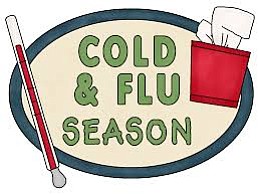Texas Hospitals Issue Guidance to Avoid Longer ER Wait Times Due to Severe Flu Season
Style Magazine Newswire | 1/18/2018, 9:36 a.m.
AUSTIN, Texas –– (Jan. 17, 2017) Texas hospitals, like others across the country, are experiencing a high volume of patients due to the seasonal flu and are taking necessary steps to ensure patients receive appropriate care.
As a result, wait times in many Texas hospital emergency departments are longer than normal as patients arrive in higher volumes due to the unusually severe flu season.
In some cases, Texas hospitals are being forced to transfer patients to other facilities because they are at capacity.
“Hospital emergency departments are intended for those experiencing life-threatening, serious and acute conditions and are staffed by highly trained nurses and physicians,” said Ted Shaw, Texas Hospital Association president/CEO “While these emergency teams are certainly capable of providing this care, patients and their families might experience a long wait and should consider the care of a primary physician.”
Patients with minor, flu-like symptoms are encouraged to consult their health insurance providers to locate the most convenient in-network clinician, or contact their primary care providers directly for appointments, guidance and treatment.
On average, each flu season, Texas physicians see about 2 to 3 percent of patients with flu-like symptoms; at the peak of flu season, that number can reach 6 percent. This year, the percentage already tops 13 percent.
“Hospitals not only are seeing more cases of flu, but also are reporting a higher number of flu patients with critical conditions this winter,” said Cyndy Dunlap, D.N.P., RN, FACHE, vice president of clinical initiatives and quality at THA. “The use of best practices for the prevention of the flu cannot be stressed enough for ourselves, our families and our co-workers”
The Texas Department of State Health Services recommends the following for avoiding the flu:
WASH YOUR HANDS: Wash your hands often. Scrub for at least 20 seconds with soap and water or use an alcohol-based hand cleaner.
COVER YOUR COUGH: Use a tissue to cover your mouth and nose when you cough or sneeze. No tissue around? Your sleeve will do.
STAY HOME: If you get sick, stay home until you’re well so you don’t spread your germs. Steer clear of others who are sick.
GET YOUR SHOT: Protect yourself and others by getting vaccinated. Use the Flu Vaccine Finder to find where to get a flu shot in your area.
Many primary care providers around the state are still offering the flu vaccine. Visit [ www.flu.gov ] to find a location to be vaccinated.




